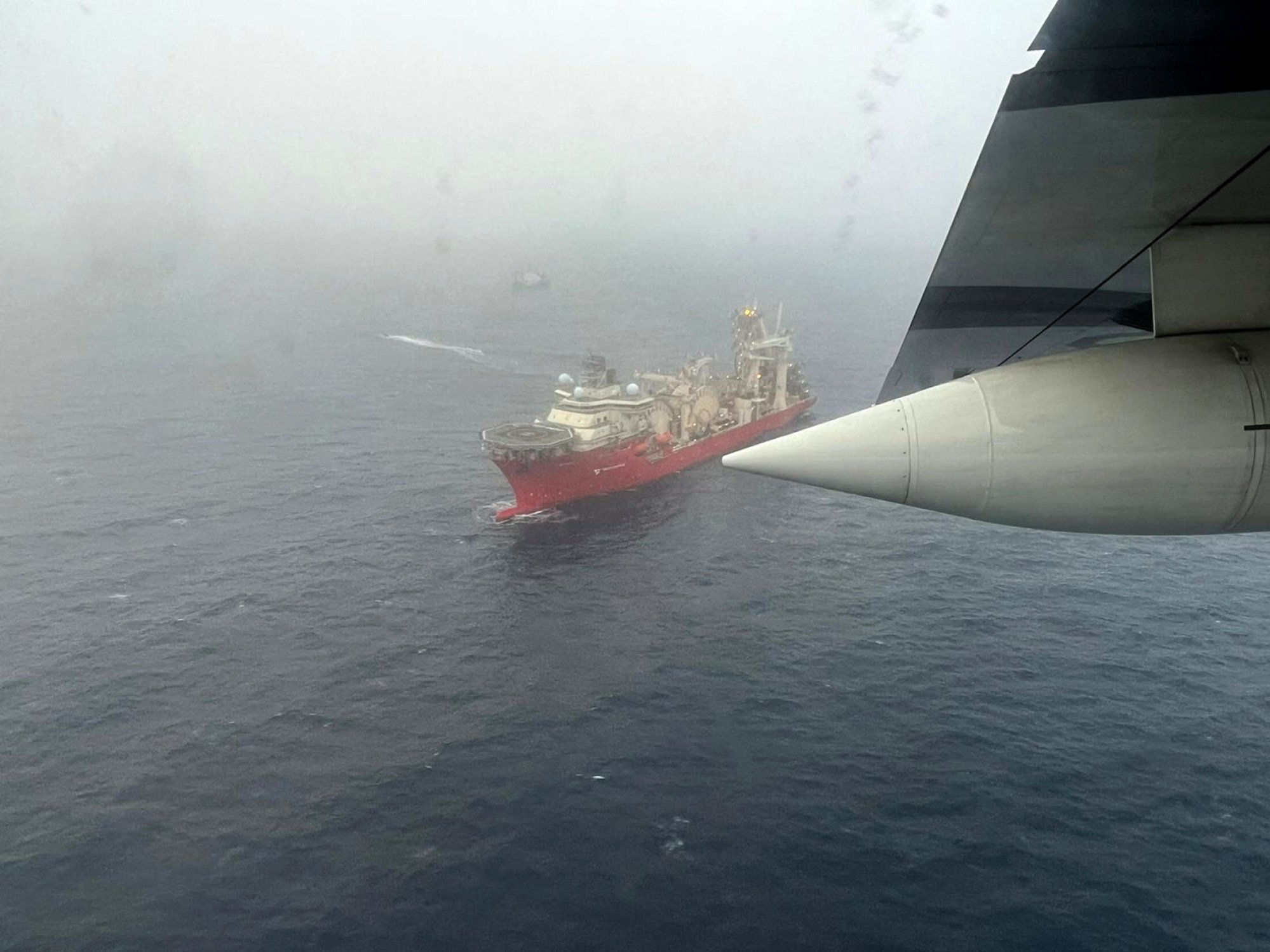
Titan sub search: rescuers remain ‘hopeful’ as critical 96-hour mark for oxygen supply passes
- Based on the sub’s capacity to hold up to 96 hours of emergency air, rescuers estimated the passengers could run out of oxygen in the early hours of Thursday
- The submersible, named Titan, began its descent at 8:00am on Sunday and had been due to resurface seven hours later, according to the US Coast Guard
A multinational mission to find a missing submersible near the Titanic wreck is still focused on rescuing the five-member crew alive, the US coastguard insisted on Thursday, despite fears that the vessel’s oxygen may already have run out.
Two more unmanned subs were deployed on Thursday as the massive hunt for the Titan, lost somewhere in a vast swathe of the North Atlantic between the ocean’s surface and more than two miles (nearly four kilometres) below, moved to the critical stage.
Coastguard officials insisted they remained “hopeful”, but the challenge of locating and recovering the crew alive appeared increasingly formidable.
Based on the sub’s capacity to hold up to 96 hours of emergency air, rescuers estimated that the passengers could run out of oxygen in the early hours of Thursday.
Who is on board missing Titanic tour submersible?
Organisers of the multinational response – which includes US and Canadian military planes, coastguard ships and teleguided robots – are focusing their efforts in the North Atlantic close to the underwater noises detected by sonar.
A French research ship equipped with an unmanned robot able to search at depths of up to 6,000 meters (nearly 20,000 feet) below water arrived near the wreck on Thursday.
Rob Larter, a marine expert at the British Antarctic Survey, told a press conference he thought the Victor 6000 robot was the “main hope” for an underwater rescue.
An additional Canadian vessel carrying medical staff and a decompression chamber was en route to the area early on Thursday, with Canadian media reporting it was not expected to arrive before midday.
We don’t know what they [the noises] are, to be frank with you
The sounds raised hopes that the passengers on the small tourist craft are still alive, though experts have not been able to confirm their source.
“We don’t know what they are, to be frank with you,” said US Coast Guard Captain Jamie Frederick.
“We have to remain optimistic and hopeful.”
The submersible, named Titan, began its descent at 8:00am on Sunday and had been due to resurface seven hours later, according to the US Coast Guard.
The 21-foot (6.5-meter) tourist craft lost communication with its mother ship less than two hours into its trip to see the Titanic, which sits more than two miles (nearly four kilometres) below the surface of the North Atlantic.
Titan was carrying British billionaire Hamish Harding and Pakistani tycoon Shahzada Dawood and his son Suleman, who also have British citizenship.
OceanGate Expeditions charges US$250,000 for a seat on the sub.
Also on board is the company’s CEO, Stockton Rush, and a French submarine operator Paul-Henri Nargeolet, nicknamed “Mr Titanic” for his frequent dives at the site.
Ships and planes have scoured 10,000 square miles (around 20,000 square kilometres) of surface water for the vessel, which attempted to dive about 400 miles off the coast of Newfoundland, Canada.
After the noises were detected by a Canadian P-3 aircraft, rescuers relocated two remotely operated vehicles (ROV) that search under the water and one surface vessel with sonar capability.
The ROV searches have not yielded results but data from the Canadian aircraft has been shared with US Navy experts for acoustics analysis.
“There have been multiple reports of noises and every one of those noises is being analysed,” said Carl Hartsfield, from the Woods Hole Oceanographic Institution.

He added that the sounds were “described as banging noises.”
The Navy has sent a specialised winch system for lifting heavy objects from extreme depths along with other equipment and personnel, while the Pentagon has deployed three C-130 aircraft and three C-17s.
Titan’s mission was expected to be the only manned trip to the Titanic this year due to bad weather, Harding wrote in an Instagram post beforehand.
The Titanic hit an iceberg and sank in 1912 during its maiden voyage from England to New York with 2,224 passengers and crew on board. More than 1,500 people died.
It was found in 1985 and remains a lure for nautical experts and underwater tourists.
Rescuers race to find missing Titanic tour sub as oxygen supply dwindles
The pressure at that depth as measured in atmospheres is 400 times what it is at sea level.
Alistair Greig, professor of marine engineering at University College London, has suggested two possible scenarios based on images of Titan.
He said if it had an electrical or communications problem, it could have surfaced and remained floating, “waiting to be found” – bearing in mind the vessel can reportedly be unlocked from the outside only.
“Another scenario is the pressure hull was compromised – a leak,” he said in a statement.
“Then the prognosis is not good.”
n 2018, OceanGate Expeditions’ former director of marine operations David Lochridge alleged in a lawsuit that he had been fired after raising concerns about the company’s “experimental and untested design” of the craft.

Tom Zaller, who runs the company behind “Titanic: The Exhibition,” toured the wreck 23 years ago in a submersible much like the one that went missing Sunday.
“You’re sending a very small vessel two and a half miles down, which is incredibly complicated and technical,” he said.
“It’s just this very seemingly unsophisticated sphere.”
Zaller has known Nargeolet for decades and was in touch with Rush before he embarked on Sunday’s tour.
“I was in that sub for 12 hours with everything working fine,” Zaller said. “They’ve been there for almost four days. I just can’t imagine.”
Additional reporting by Associated Press

.png?itok=arIb17P0)
